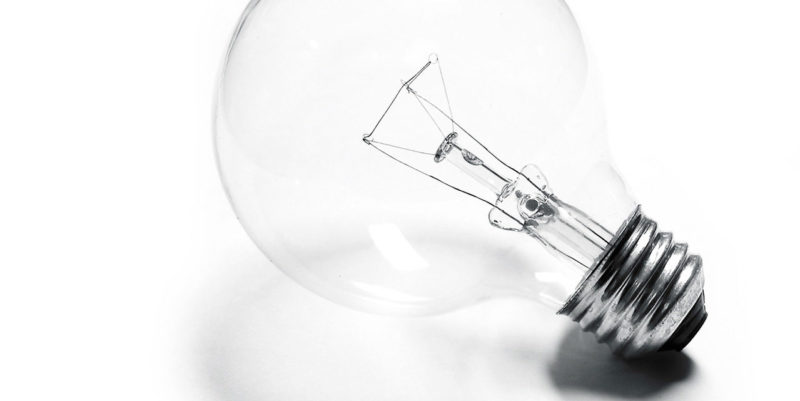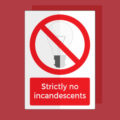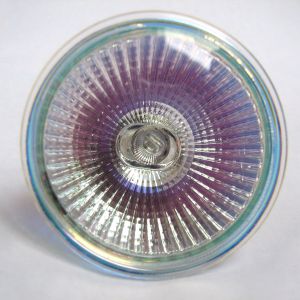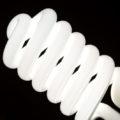On 1 September 2009, the European Commission introduced a directive that aimed to ban the sale of incandescent light bulbs across the EU.
Designed to take place over a period of three years, it claimed the 100W filament light bulb first, followed by the 60W version two years later and by 2012, the process was completed with the removal of the 40W light bulb and all other remaining derivatives. At the time this decision was both pilloried and praised, depending on which side of the fence you were on. However, since the ban’s introduction, a loophole has remained that enabled companies to continue selling light bulbs with this same technology – a loophole which, at the end of this month, is set to close.
But what was the ban even for, and why did many opposed to it? Well, to some it represented a well-intentioned effort on the part of the EU to phase out what is a grotesquely inefficient technology (90% of an incandescent light bulb’s energy is wasted on heat). To others, it was a reckless and misguided blunder that ignored the dearth of viable, affordable alternatives to replace it.
Indeed despite the UK government’s assertion at the time that ‘the average annual net benefit to the UK between 2010 and 2020 is predicted to be £108 million’, it was also branded as ‘illogical […] wrong, muddle-headed and infuriating’ by Michael Hanlon of the Daily Mail.
Despite this, a certain class of incandescent light bulb had been exempted from the ban in order to nullify its effect on the trade and industrial sectors. Called ‘rough service’ or ‘special purpose’, this range of light bulbs shared the same technology, aesthetics and price as the outgoing incandescent version. However, as long as a light bulb was sold under the ‘rough service’ label, it was entirely legal.
In September 2015 though, the EU moved to close this loophole. The sale of special-purpose light bulbs will still be permitted but from 27 February 2016, a tranche of new amendments to the original 2009 directive introduced that clarify how such a light bulb is defined.
Now, incandescent light bulbs which are longer than 60mm and resistant only to mechanical shocks or vibrations (the current definition of a rough service/special purpose light bulb) will no longer be classed as such; thereby resigning them to the doldrums along with those that have gone before. It’s worth noting though that this newer, refined definition will not apply to light bulbs destined for use in traffic light signalling and image capture technology.
So what does this mean for companies and consumers? Are LED light bulbs still so far behind that this new directive will plunge us all into the literal and metaphorical darkness? With an additional ban on halogen light bulbs having been delayed until 2018 because of similar concerns over replacement technologies, you might be inclined to think so.
However,
Where a 5W LED GU10 would have cost around £30 in 2009, today they can be picked up for a fraction of that cost. Despite this, LED technology still has a comparatively higher initial cost, but its ability to slash lighting bills thereafter and pay for itself over a relatively short period is sure to encourage people to adopt what is now a mature and established alternative.
Besides, stocks of the older incandescent and even halogen are dipping lower, with the inability to manufacture more, you’ll no longer have the option anyway…
Read more information on the light bulb ban itself, while additional information on some of its consequences can be found elsewhere on our blog.





HI All, I am all for saving the environment HUGELY but I am also concerned that there is no mention of the side effect of LEDs or Halogens on the health of the brain and in particular the eye. There is said to be substantial evidence of the increased risk of macular degeneration which causes blindness. My father went blind from a form of this, which began in his early 50’s. This generation will be the Guinea pigs- I hope a better solution may yet be discovered.
As a retailer of domestic lamps, I have never gone down the “rough service” technology, but stuck to the halogen capsule type while offering CFLs and LED alternatives. The CFLs are unpopular because they are not “instant on”. The problem with LEDs is the price, reliability (some I have sold from “quality” manufacturers ) with failures after a few weeks and also different manufacturers interpretation of say “warm white” causing a colour mix-up in multi-lamp fittings. This is no problem with the old lamps. The other problem is many people on benefits etc in rented accommodation do not want to pay for a lamp that lasts 25years! The retail price of the old lamps was 45p compared with £7 for a LED.
I have discovered the joys of the new LED bulb technology. They are available in a wide choice of sizes, shapes and colour temperatures to suit all tastes. And they’re now very cheap to buy (£1 from pound shops!). The Edison technology has served us well for over a century, so maybe it’s time to retire the filament bulb to history along with valve electronics and similar obsolete technologies. The bulb is the last major invention to go solid state! The latest LED “filament” bulbs are amazing, and offer the same 360 degree beam spread as the old incandescant, with no bulky ballast or heatsink to block out the light (glass to the cap). These are great for fittings designed for the old A60 classic bulb shape. There’s also no reason why this technology can’t be used to produce coloured bulbs by simply substituting different LEDs in the “filaments”, (no filters required).. What’s more the light is clean and crisp and very natural, making reading pleasurable again!
An interesting article. What would be really useful would also be a table showing the lightbulbs that are no longer available and are due to become unavailable and your/Lightbulbs Direct’s recommended replacement(s). It would be v helpful to be recommended a bulb that had the same brightness (60W, say) and same ‘warm’ light as the old incandescent bulb. Also whether or not dimmable.
Tim.
Hi Tim, thanks for taking the time to give this a read.
This is certainly something I’ll look into adding in a future post. For now though I can actually go one better. Below I’ve included a link to an interactive app on our website that allows you to choose from a list of suitable energy saving replacements for specific bulb types.
Ultimate one stop LED lighting guide
It’s really quite intuitive and lets you choose from either Halogen, CFL or LED alternatives, though we’d normally recommend LED owing to its higher efficacy and efficiency.
Glad you liked the article!
Andy.